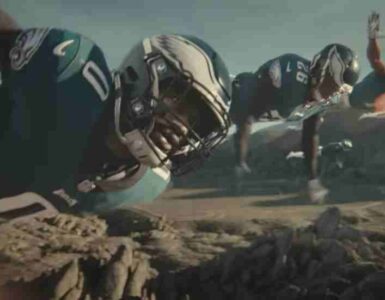Who hasn’t enjoyed the coverage of March Madness? Particularly during this year, I’ve noted the upsurge in player intensity, the violence of the defensive tenacity, the officiating curbing their zealousness to blow the whistle. When the stakes are high, let the players play.
The way the tournament is organized, the way it can entrap even irreligious fans of college basketball to the sport for a month is immaculate. The preceding months of querying bracketology; over-assessing the amount of Quadrant 1 or 2 wins a team has, speculating on who actually will pull off a decibel level-upset — It’s a stream of dopamine straight into the soul.
We’ll now honor the players who responded most spectacularly to the pressures of a single-elimination tournament. Here are the best performances, ever displayed, during the Final Four.
Bill Walton (1973)
In a documentary revolving around the legacy of John Wooden, while reminiscing upon his upon his own time at UCLA, Bill Walton lamented: “We could have been perfect.”
During Walton’s heyday, UCLA managed 88 consecutive victories. He started his career with a win-loss record of 73-0. His UCLA teams were almost perfect.
The Everest of Walton’s UCLA career was during the national championship game against Memphis, where he scored 44 points, going 21-22 from the floor. He could have been perfect, but his failure to completely achieve it was still adequate enough to dispose of the Memphis Tigers.
Danny Manning (1988)
Danny Manning was so spectacular during Kansas’s 1988 championship run, his team earned the moniker of “Danny and the Miracles.”
Great name for a band, correct?
In the national championship game against Oklahoma, Manning netted a double-double, scoring 31 points and grabbing 18 rebounds.
Kansas was only a 6 seed during their sprint through March. Their eventual coronation, atop the college basketball landscape was, indeed, a miracle.
Christian Laettner (1991)
It’s easy to loathe Christian Laettner. He embodies what we perceive as an entitled Duke basketball player.
His turnaround jumper against Kentucky remains the stuff of March Madness lore.
In 1991, during the Final 4, he scored 28 points against a vaunted UNLV squad to capture a national championship for Duke. Moreover, he managed to score at least 18 points or more, in all 6 of Duke’s contests during the tournament.
Kemba Walker (2011)
Kemba Walker became a national sensation in 2011, when he almost singlehandedly won UConn a national title.
The Huskies finished 9th in the Big East during the regular season. They were not on the radar of any bracketologist for inclusion in the NCAA Tournament. They, however, improbably won the 2011 Big East Tournament, receiving an automatic bid.
Kemba put on a one-man show once inserted into March, willing UConn to victory after victory. During their unexpected advance, Walker averaged 23 points and played for almost the entirety of each game. If there was any remaining doubt about UConn’s legitimacy as a blue-blood program, Walker decisively expelled it.
Mateen Cleaves (2000)
The legend of Tom Izzo was pronounced most clearly by Matten Cleaves.
Michigan State had always been regarded as a gritty program, characteristic of the Midwest. Never was that on more staunch display during their title-winning antics, led by Cleaves, in 2000.
During the Spartan’s tournament run, Cleaves averaged 14.2 points, 4.5 assists, and 1.2 steals per game. He engineered the “Spartan Way,” one that would become distinctly manifest in the ensuing decades under Tom Izzo.
Lew Alcindor (1969)
A player so dominant, the NCAA had to outlaw the dunk to even the playing field against lesser foes.
Lew Alcindor, now Kareem Abdul-Jabbar, was the greatest college basketball player of all-time. One could argue he’s the greatest player of all-time. Yet, alas, his thoughtful disposition, his aversion to histrionics, has rendered him as an afterthought in the “Greatest Ever” debate.
In his final performance in college, Kareem went 15/20 from the floor against Purdue. He scored 37 points while pulling down 20 rebounds. UCLA, again, won a national championship as a result of his efforts.
Magic Johnson (1979)
Earvin Johnson became “Magic” Johnson in 1979. In the most viewed college basketball game of all-time, featuring Magic against his counterpoise, Larry Bird; Magic prevailed.
Anticipating his future as the engineer of “Showtime,” Johnson once said: “Y’all c’mon and gather round me. I love playing basketball, love it to death. And I love this attention. I eat it up. Long as you got questions, I have answers.”
His actions bespoke his words, against Indiana State.
Carmelo Anthony (2003)
College basketball lies in a nebulous area now, with the introduction of Name-Image-Likeness into the equation of how players elect to foster their future.
In the early-aughts, however, most observers of the sport were more curious about the inevitable impact of the one-and-done rule propositioned by the NBA.
Carmelo Anthony, and later Kevin Durant, proved in decisive terms, that some players are born ready, that the regimen of college was unnecessary for them to pursue their aspirations. In his final game against Kansas, Anthony spearheaded the Orangemen’s effort toward a title against Kansas. He executed a triple-double – 20 points, 10 rebounds, and 7 assists.
In his one year at Syracuse, he made the most of it.



